Like surfboards, snowboards come in a variety of shapes depending on the intended conditions.
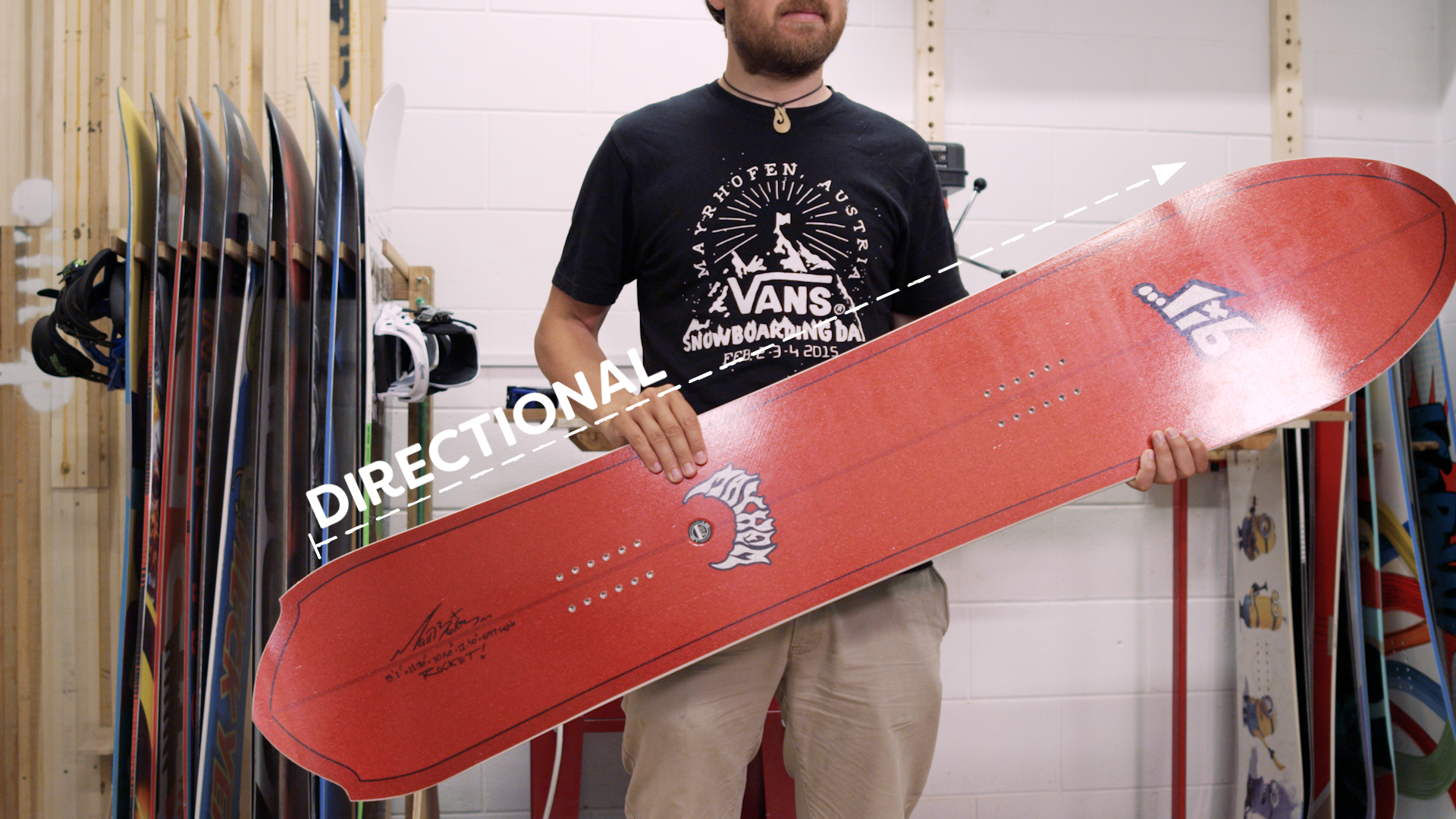
Like surfboards, snowboards come in a variety of shapes depending on the intended conditions.

‘Directional’ boards typically have a longer, pointier nose, with a stance set back towards the tail. This makes them better suited to riding forwards. These boards will carve well on the piste and plough easily through powder – since the short tail naturally sinks while the large nose floats over the snow.
Powder-specific models will often deploy a so-called ‘swallow tail’ to accentuate the effect.
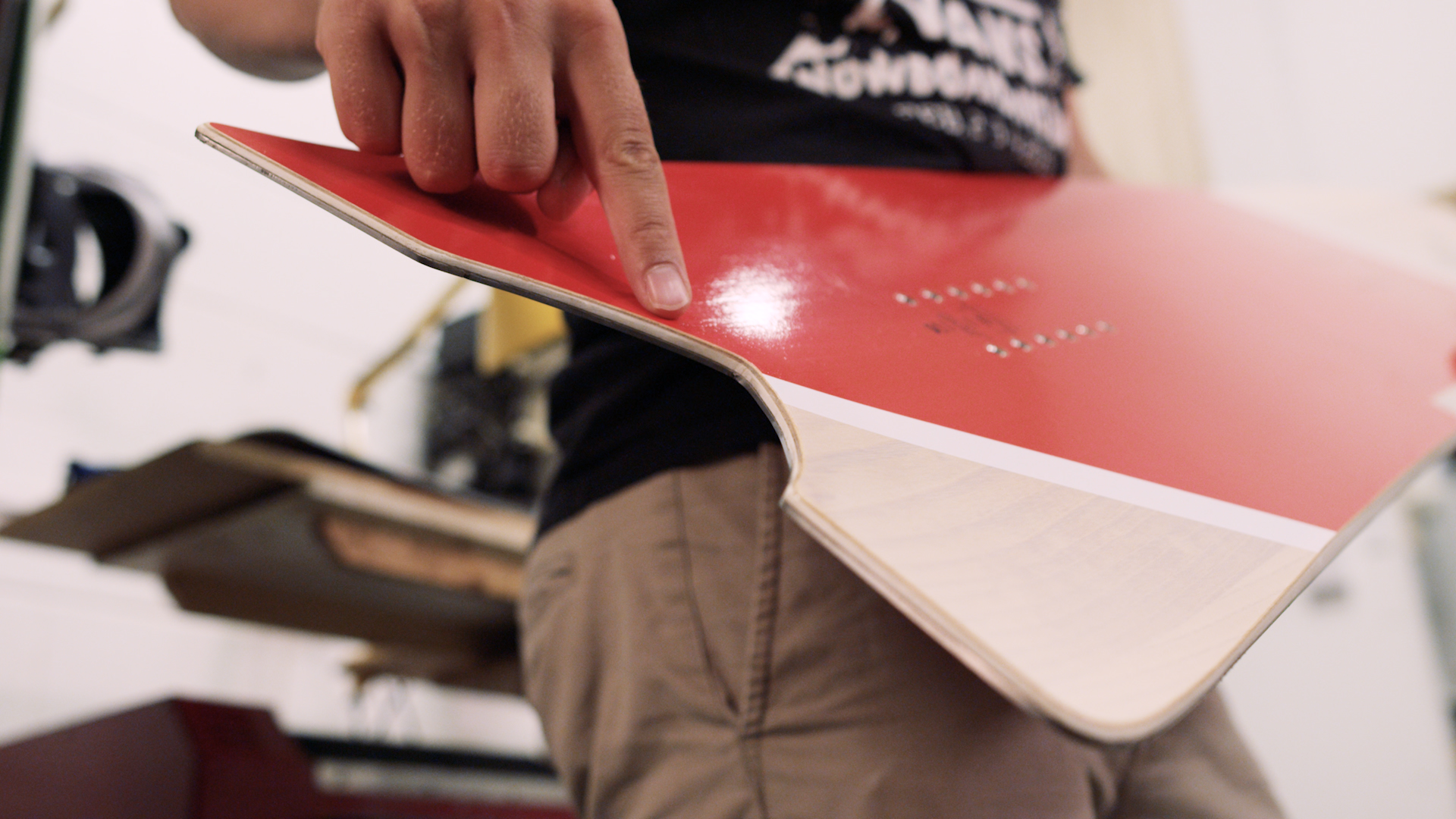
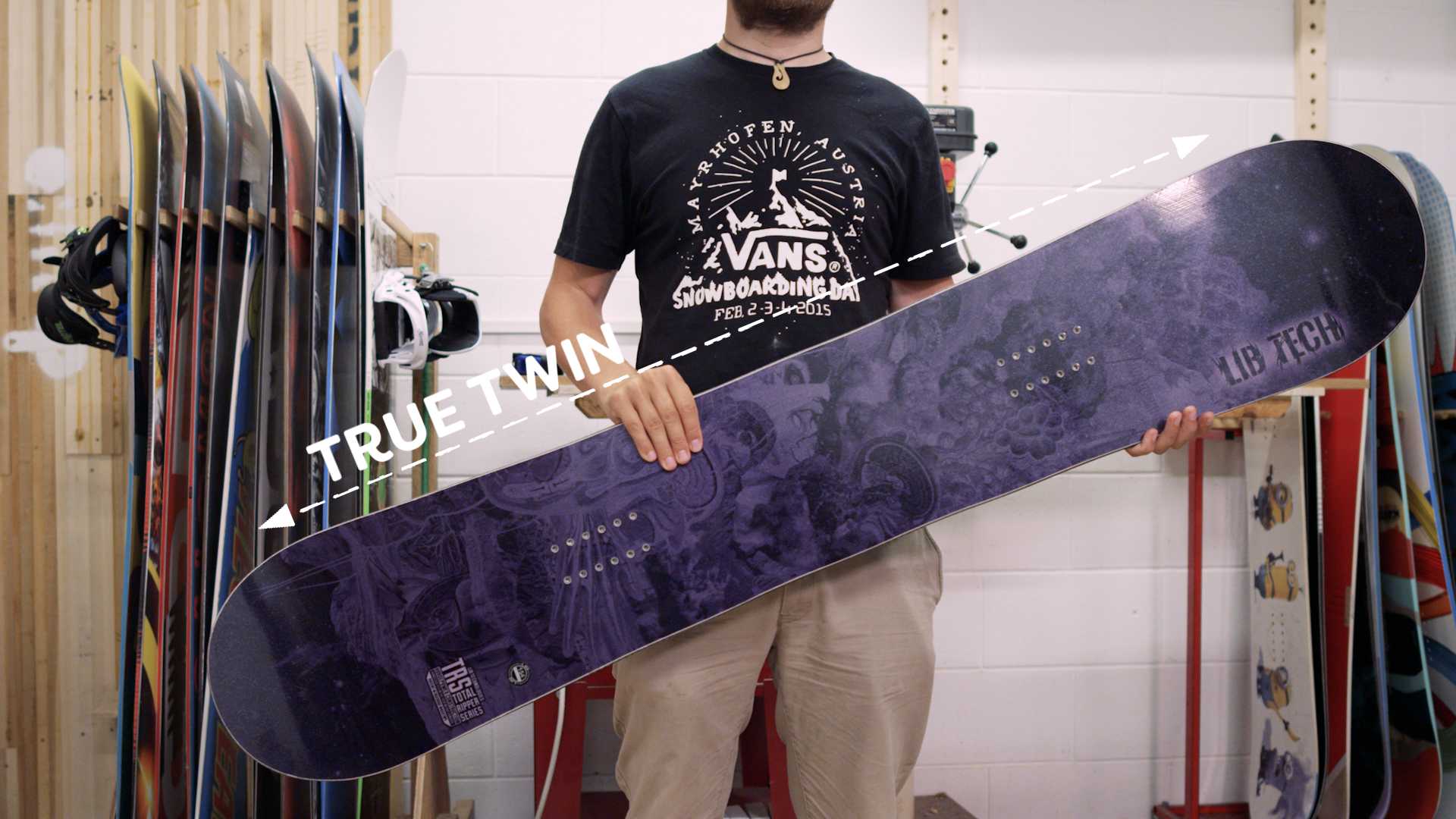
‘True Twin’ boards are exactly the same at either end. The nose and tail are a mirror image in terms of shape, the default stance is exactly centered, and the flex is the same in both directions.
As you might imagine, this means true twin boards ride equally well forwards and backwards, and are perfect for park tricks that require you to take off or land switch.
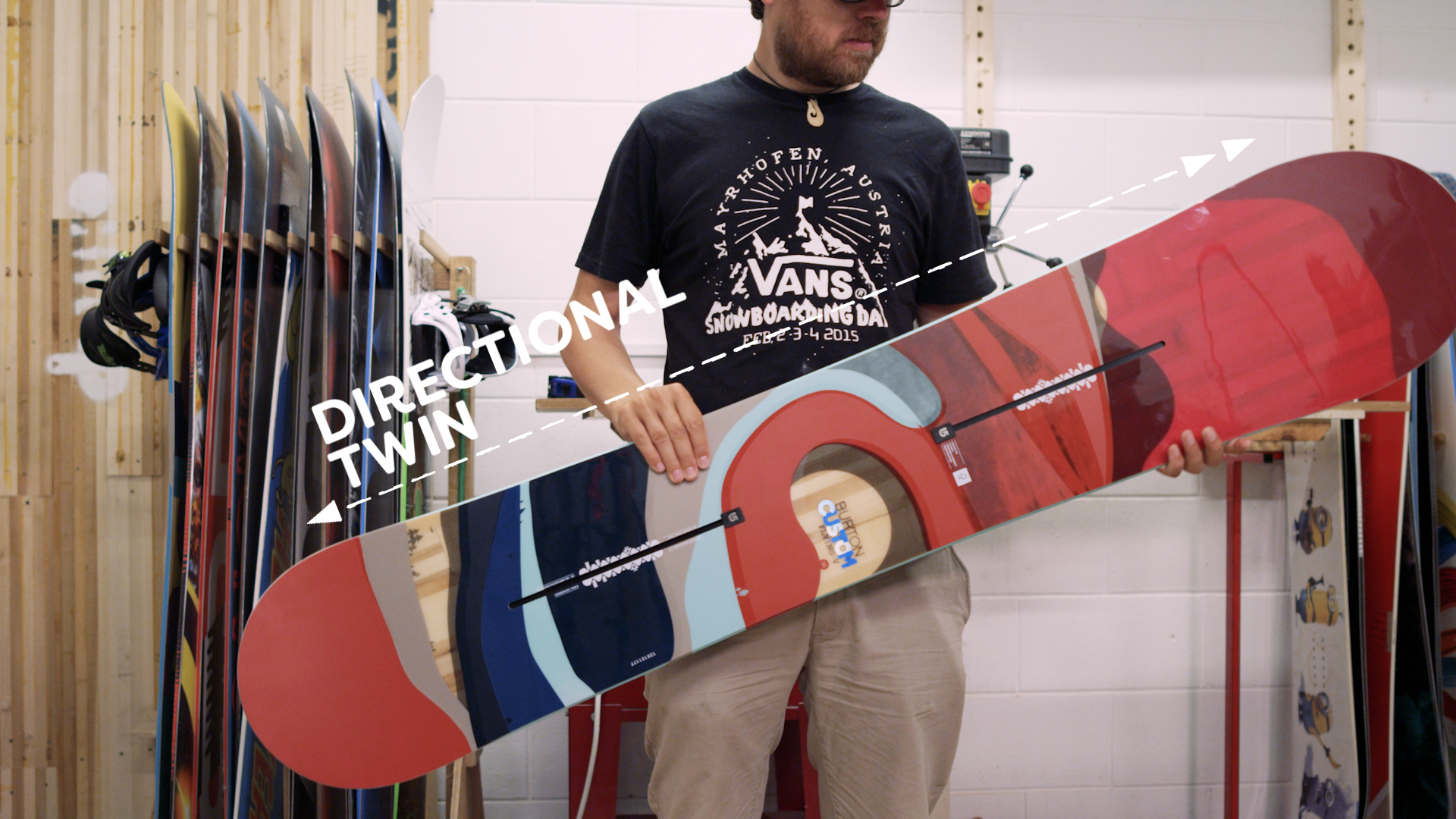
A ‘Directional Twin’ has the same shape at the nose and tail but the default stance is slightly set back and/or the flex is not symmetrical (usually being stiffer in the tail).
Such a design is typically found in so-called ‘all mountain’ snowboards which are ridden primarily forwards (on the piste or in powder) but which can also happily be used to perform tricks on rails and jumps. In short, directional twins offer the best of both worlds, making them perhaps the most popular shape on the market.
‘Asymmetrical’ snowboards attempt to improve carving performance by incorporating a sharper sidecut on the heel edge compared to the toe edge. Heelside turns are normally harder to execute because of the body’s natural mechanics, so tightening the sidecut on this edge – effectively tightening the turning circle – acts as a counterbalance.
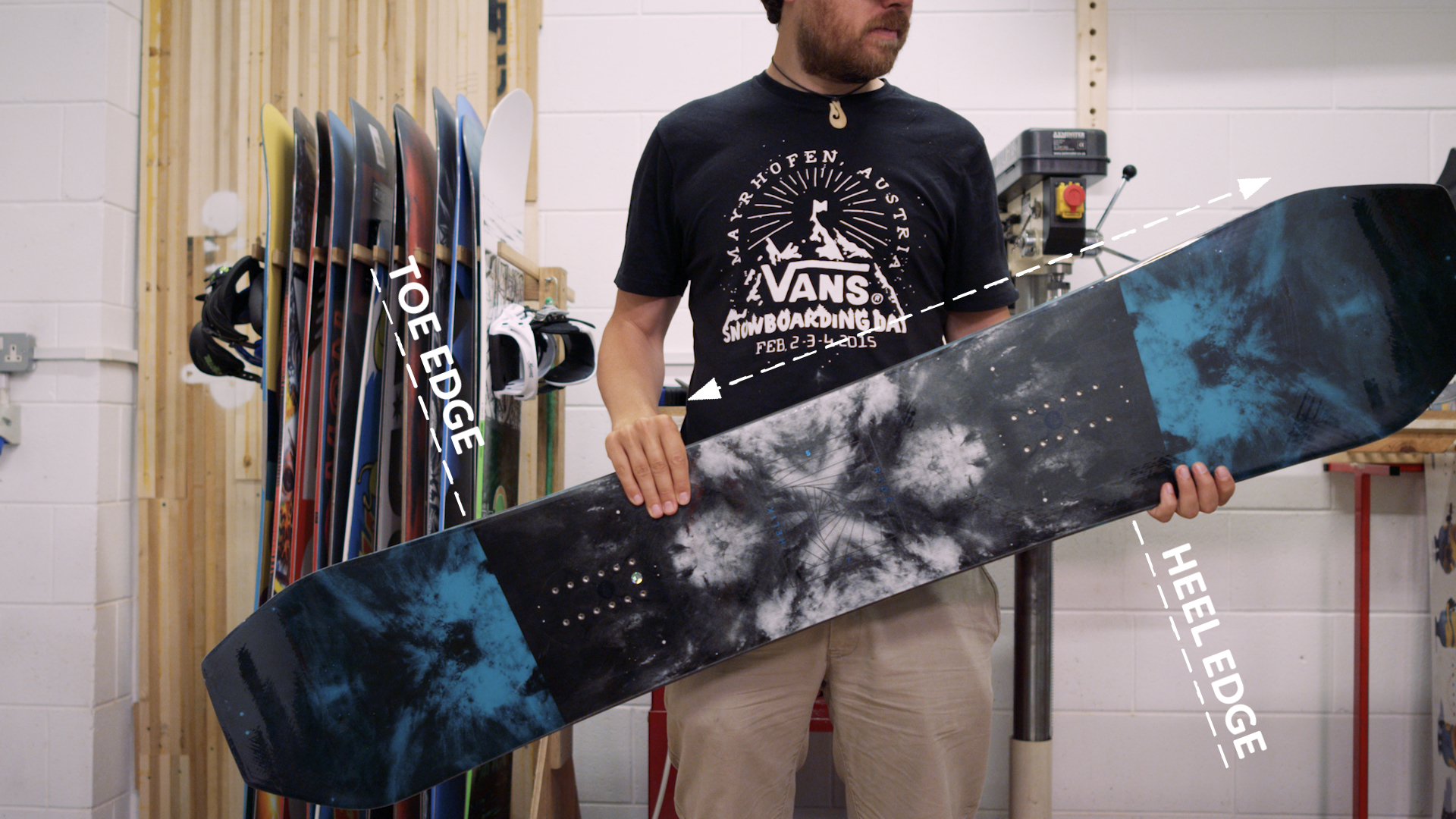
A twin asymmetric board (above) has a centered default stance and mirror-image nose and tail. As such, it is well suited to freestyle tricks and switch riding. Regardless of whether you are regular or goofy, your heel edge will be on the same side of the board (the ‘nose’ will be determined accordingly).
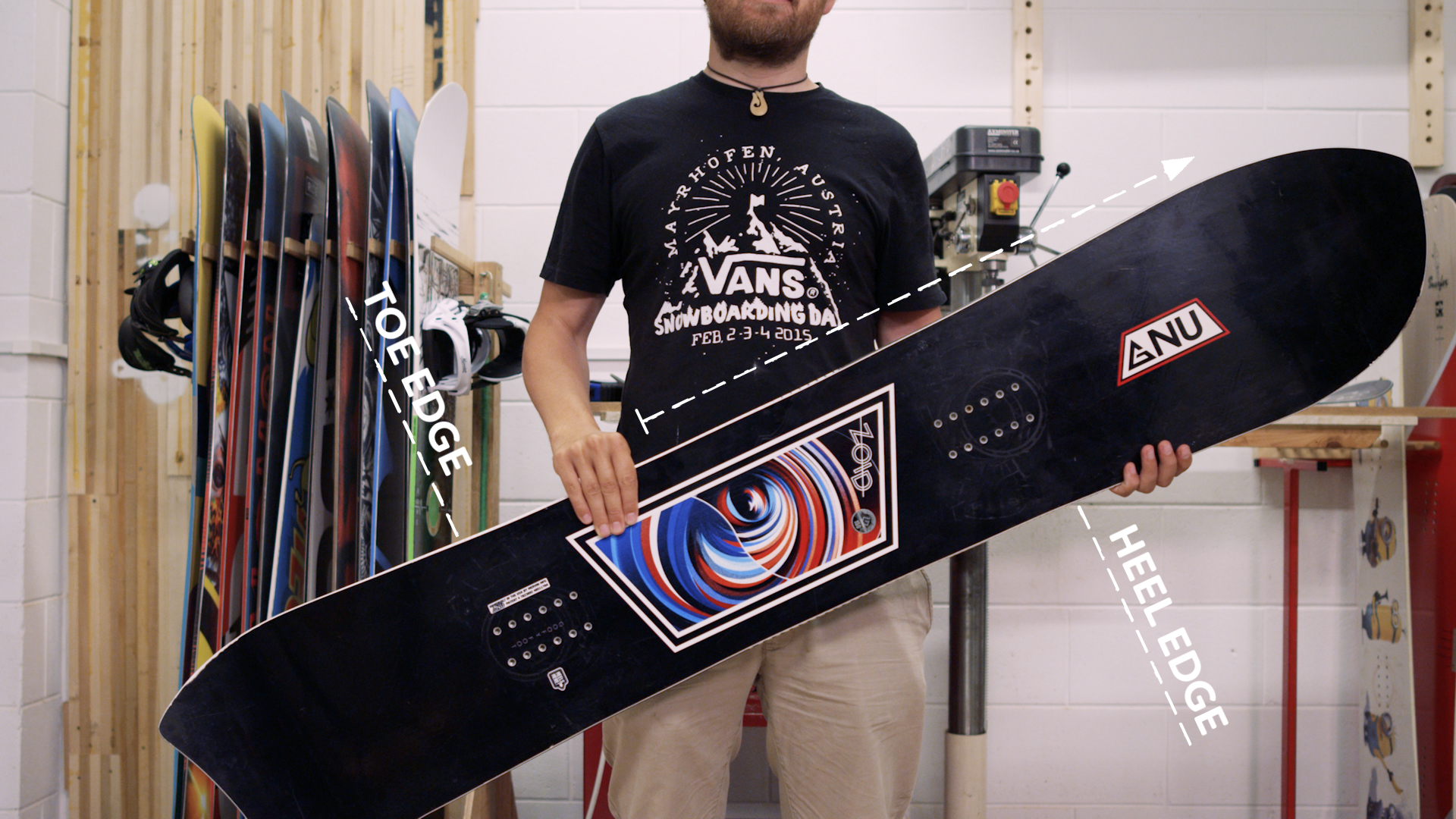
A directional asymmetric board (above) has a longer nose than tail, and a set-back stance. Since you can only really ride it one way – and the heel edge is specified – you will need to buy either a regular or goofy version.
These boards offer uncompromised carving ability going forwards.
Ready to buy? Check out the latest snowboards at Surfdome.